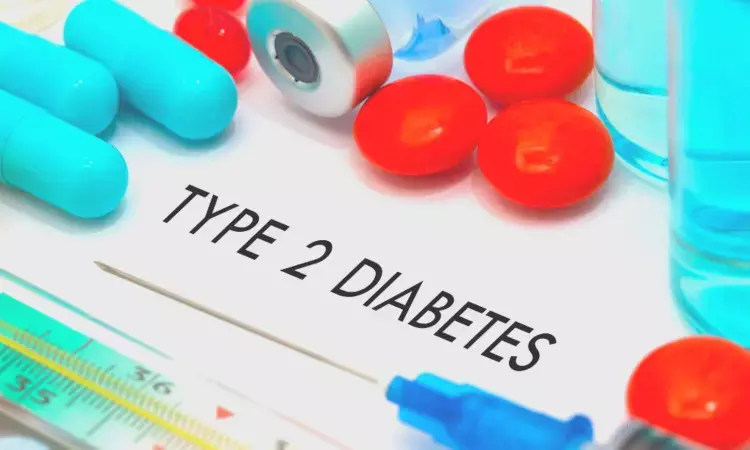- Home
- Medical news & Guidelines
- Anesthesiology
- Cardiology and CTVS
- Critical Care
- Dentistry
- Dermatology
- Diabetes and Endocrinology
- ENT
- Gastroenterology
- Medicine
- Nephrology
- Neurology
- Obstretics-Gynaecology
- Oncology
- Ophthalmology
- Orthopaedics
- Pediatrics-Neonatology
- Psychiatry
- Pulmonology
- Radiology
- Surgery
- Urology
- Laboratory Medicine
- Diet
- Nursing
- Paramedical
- Physiotherapy
- Health news
- Fact Check
- Bone Health Fact Check
- Brain Health Fact Check
- Cancer Related Fact Check
- Child Care Fact Check
- Dental and oral health fact check
- Diabetes and metabolic health fact check
- Diet and Nutrition Fact Check
- Eye and ENT Care Fact Check
- Fitness fact check
- Gut health fact check
- Heart health fact check
- Kidney health fact check
- Medical education fact check
- Men's health fact check
- Respiratory fact check
- Skin and hair care fact check
- Vaccine and Immunization fact check
- Women's health fact check
- AYUSH
- State News
- Andaman and Nicobar Islands
- Andhra Pradesh
- Arunachal Pradesh
- Assam
- Bihar
- Chandigarh
- Chattisgarh
- Dadra and Nagar Haveli
- Daman and Diu
- Delhi
- Goa
- Gujarat
- Haryana
- Himachal Pradesh
- Jammu & Kashmir
- Jharkhand
- Karnataka
- Kerala
- Ladakh
- Lakshadweep
- Madhya Pradesh
- Maharashtra
- Manipur
- Meghalaya
- Mizoram
- Nagaland
- Odisha
- Puducherry
- Punjab
- Rajasthan
- Sikkim
- Tamil Nadu
- Telangana
- Tripura
- Uttar Pradesh
- Uttrakhand
- West Bengal
- Medical Education
- Industry
De-intensification of bolus insulin in type 2 diabetes after GLP-1 RA initiation improves blood sugar and aids weight loss

Italy: Using GLP-1 receptor agonists instead of prandial insulin is a valuable strategy to simplify the basal-bolus (BB) insulin regimen while improving blood sugar control and promoting weight loss in type 2 diabetes (T2D) patients, researchers state in a study published in Acta Diabetologica.
Type 2 diabetes is a chronic condition characterized by insulin resistance, hyperglucagonaemia, and progressive beta-cell dysfunction. Type 2 diabetes patients are commonly given metformin initially, and if the glycemic targets remain unmet, different combinations of antihyperglycaemic agents can be considered and individualized. In cases where other agents fail to achieve or maintain glycemic targets, Treatment intensification to insulin therapy should be considered.
Even after treatment intensification with basal insulin, 30–64% of type 2 diabetes patients receiving oral antidiabetic drugs (OADs) and insulin do not achieve an HbA1c target of <53 mmol/mol. For these patients, adding bolus insulin, basal-bolus insulin therapy, or a change to premixed insulin or insulin coformulations is often considered the next step for improving glycemic control. In people with diabetes, two fixed-ratio combinations (FRCs) of basal insulin and GLP-1 receptor agonists are available for once-daily use in adults with type 2 diabetes.
Against the above background, Cristina Bianchi, Department of Medicine, University Hospital of Pisa, Pisa, Italy, and colleagues conducted a study to investigate the impact of glucagon-like peptide-1 receptor agonist (GLP-1 RA) addition in type 2 diabetes patients in basal-bolus (BB) insulin regimen, on HbA1c, insulin requirement, weight loss up to 24 months.
For this purpose, the researchers retrospectively collected data on T2D patients on BB who initiated a GLP-1 RA. The recording of body weight, HbA1c, and insulin dose was done at baseline 6, 12, and 24 months following GLP-1 RA therapy initiation. Changes in body weight, HbA1c, and insulin requirement were evaluated over time.
The main findings of the study include:
- 156 participants (63.5% males; age 62 ± 11 years, HbA1c 70 ± 22.0 mmol/mol; 8.6 ± 4.2%) were included.
- HbA1c and body weight compared to baseline was significantly lower at six months after GLP-1RA introduction and remained stable up to 24 months.
- At 24 months, 81% of subjects discontinued prandial insulin, while 38.6% discontinued basal insulin.
- Insulin requirement at baseline (aOR 0.144) was the only significant predictor of prandial insulin discontinuation.
Replacing prandial insulin with GLP-1 RA is a valuable strategy to simplify the BB insulin regimen while improving glycaemic control and promoting weight loss in subjects with T2D.
Reference:
Falcetta P, Nicolì F, Citro F, Ciccarone A, Garofolo M, Del Prato S, Bianchi C. De-intensification of basal-bolus insulin regimen after initiation of a GLP-1 RA improves glycaemic control and promotes weight loss in subjects with type 2 diabetes. Acta Diabetol. 2022 Sep 27. doi: 10.1007/s00592-022-01974-0. Epub ahead of print. PMID: 36166172.
Dr Kamal Kant Kohli-MBBS, DTCD- a chest specialist with more than 30 years of practice and a flair for writing clinical articles, Dr Kamal Kant Kohli joined Medical Dialogues as a Chief Editor of Medical News. Besides writing articles, as an editor, he proofreads and verifies all the medical content published on Medical Dialogues including those coming from journals, studies,medical conferences,guidelines etc. Email: drkohli@medicaldialogues.in. Contact no. 011-43720751


